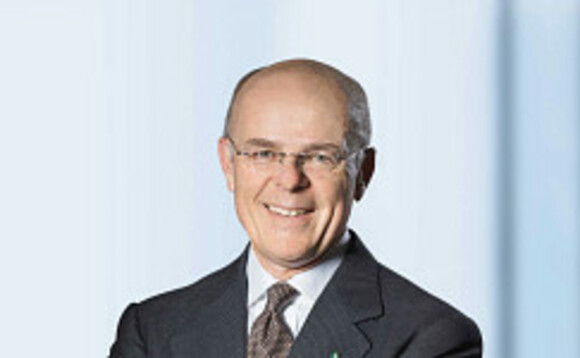Zurich Insurance Group reported very strong profits for the full year 2022, with the highest business operating profit (BOP) since 2007.
In a statement on 9 February, Zurich said the year 2022 had ended the second three-year financial cycle of the strategy to transform Zurich into a simpler, more innovative and customer-centric organization.
Group chief executive Mario Greco (pictured) said: "We have exceeded our financial targets for the second consecutive three-year period. These were tough years with unexpected challenges during which we had to stay very agile and focused on our goals. We continued to execute our strategy with strong discipline and successfully drove our results to deliver the targets. I would like to thank all my colleagues, our customers and our partners for this remarkable achievement.
"The P&C business reports today an excellent combined ratio and more importantly shows double digit top-line growth. Higher risk-adjusted prices in commercial insurance and continued measured progress towards our growth ambitions took P&C gross written premiums to a record level.
"The Life business achieved the highest profits ever, with a very light capital consumption. Our balance sheet remains excellent, especially as we progress with the sale of Life back books in Europe. This, together with our strong operating results, has allowed us to propose a 9% increase in the dividend per share to CHF 24.
"In November, we presented our new financial targets and raised our ambitions for the next three years. Over the period 2023-2025, we will accelerate the execution of our customer-centered strategy by further extending the application of data analytics throughout the Group and by accelerating digital innovation.
"The combination of continued margin improvement in our commercial business, improving trends in retail and our ability to grow across all our businesses supports the Group's higher financial ambition for the 2023-2025 cycle."
For the life business, full year BOP of $1,963m was up 8% compared with the prior-year period, despite unfavourable currency movements due to US dollar appreciation against other major currencies.
On a like-for-like basis, Life BOP rose by 23%, with stronger operating performance and lower COVID-19 claims more than offsetting the adverse effects of financial markets. COVID-19 claims fell to $57m from $195m in the previous year.
In EMEA, BOP increased by 16% on a like-for-like basis, with solid underlying performance, a better COVID-19 experience and favourable effects from management actions more than offsetting the adverse impact of financial market volatility.
In Asia Pacific, BOP increased 3% on a like-for-like basis despite higher COVID-19 claims, as the spread of the Omicron variant in the first half-year led to an increased amount of hospitalization claims in Japan.
In Latin America, BOP doubled on a like-for-like6 basis driven by an improved COVID-19 claims experience, profitable growth and favourable market movements.
Life new business annual premium equivalent (APE) sales increased 1% on a like-for-like6 basis. Zurich said the growth was driven by higher sales in capital-efficient savings and protection products, which accounted for 95% of APE.
In US dollar terms, APE was 7% below the prior-year period, with growth in local currencies offset by US dollar appreciation against other major currencies.
In EMEA, APE sales were 3% below the previous year on a like-for-like basis. This was primarily driven by a reduction of low-margin individual savings in Spain and a slowdown of unit-linked sales in the second half-year, which were partially offset by growth in corporate savings in Switzerland.
APE sales in Asia Pacific rose 14% on a like-for-like basis, driven by protection in Japan and Australia in the second half of the year. In Latin America, APE sales grew 8% on a like-for-like basis driven by protection in the Zurich branded business.
Zurich further said new business margin remained attractive at 24.8%, down from 29.1% in the previous year, due to a net unfavourable impact of modelling and assumption updates, a less favourable product mix within preferred lines, as well as adverse economic variances mainly related to higher discount rates. These factors also resulted in new business value of $761m, 15% below the previous year on a like-for-like basis.





